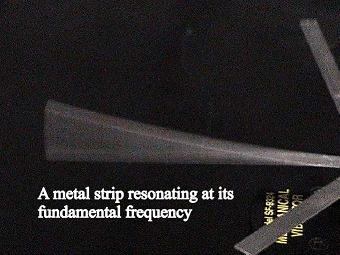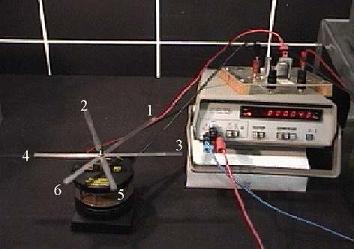The resonant frequencies of metal strips depend on their lengths.
Watch The Video:
Teachable Topics:
- Fundamental frequency
- resonance
- vibration
Theory:
A metal strip that is being oscillated at one end will resonate at certain frequencies. The lowest frequency at which the strip will resonate is called the fundamental frequency of the strip. The corresponding wavelength of this oscillation is called the fundamental wavelength.
A longer metal strip has a longer fundamental wavelength. Because of the relationship, between frequency (f) and wavelength (λ) in a strip where the wave velocity is v,
λf = v
An oscillation with a larger fundamental wavelength must have a lower frequency, and vice versa. If several metal strips of differing lengths are made to oscillate, the longest strip will resonate at the lowest frequency. As the frequency of oscillation increases, the longest ribbon will stop resonating and the second longest strip will begin to resonate. At higher and higher frequencies, the third strip, then the fourth strip (and so on) will each resonate in turn.
 Figure 1: Resonating metal strip
Figure 1: Resonating metal strip
Apparatus:
- frequency counter
- oscillator
- metal strips
- clamps
- metal stand
- mechanical vibrator

Figure 2: Apparatus
Procedure:
- Attach the ribbons to the mechanical vibrator and connect the vibrator to the oscillator.
- Connect the oscillator to the frequency counter to show the frequency being produced. It will take a few moments to for the equipment to warm up.
- When it is warmed up, adjust the frequency until you see the longest ribbon begin to resonate.
- Continue to increase the frequency to see each strip begin to resonate in turn.
This photo below is a shot from the video of the resonating strips. The strips are labeled in order of increasing length.

Figure 3: Labeled strips



